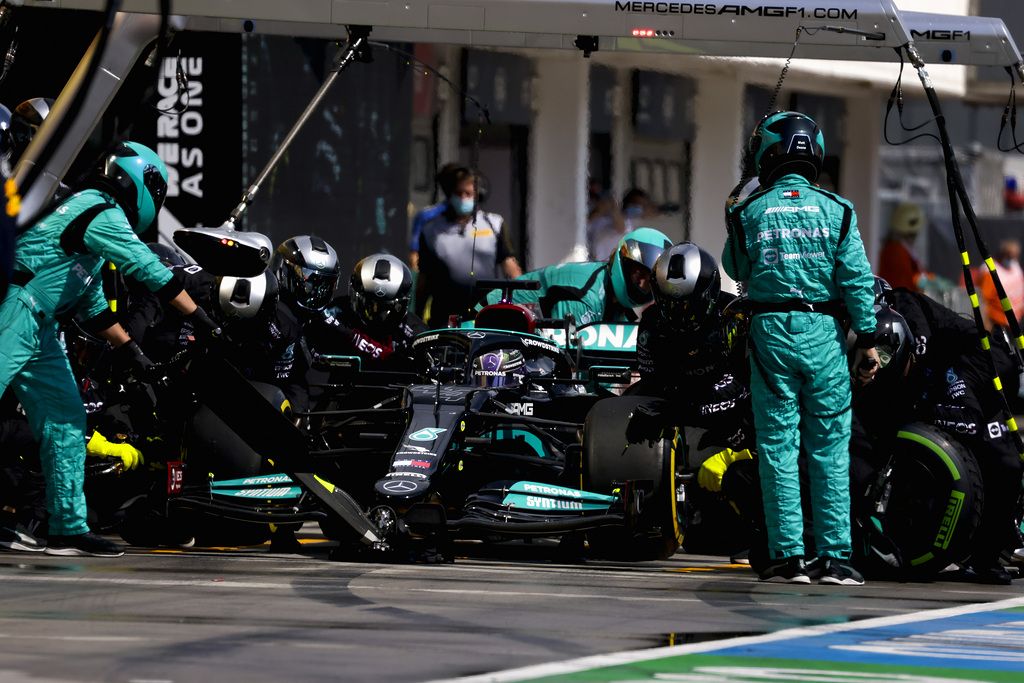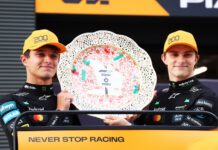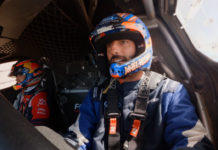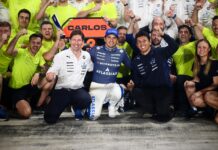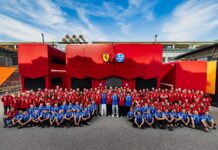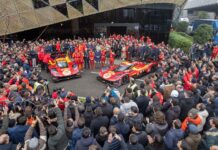Mercedes technical director Mike Elliott admitted that they got the F1 Hungarian GP strategy wrong with Lewis Hamilton, as he expands on his race.
In their usual post-race debrief, Mercedes technical director, Elliott, opens up on their strategy mistake in F1 Hungarian GP. After the end of the grand prix, Toto Wolff stuck by the decision, even though Hamilton reckoned, it was a wrong choice.
Elliott noted the difficulty for Mercedes to opt for a pit in moment as a leader, because they don’t know what others are to do, which is why taking the safe option of staying out was given a green signal. Had he stopped, Hamilton would still have lost places.
But the damage would have been less, considering that he would have come out fifth or sixth, rather than last, which required more struggle to get by. As it turned out, he did get stuck behind a train of cars, including F1 title rival Max Verstappen.
Fortunately, they worked out a strategy to not only undercut Verstappen, but also Daniel Ricciardo, which saved them a lot of time on a difficult track to pass. However, the Fernando Alonso defence hampered their run eventually to settle for third – which at the moment is second, pending the investigation into Sebastian Vettel’s DQ.
Re-start tyre decision:
Elliott: “Well, clearly in hindsight we made the wrong choice, but you have to bear in mind those decisions are really, really tricky. We agonised over what tyre to fit at the very start of the race, as it turned out the inter was definitely the right choice because it started raining on the lap to the grid. We agonised over what tyre to fit after the red flag and clearly all of the cars fitted inters. And on that lap to the grid, even though all the drivers had fitted inters, clearly others decided to change their mind and we should have too. But the reality is, it’s actually more difficult for us as a team than it is for the other teams. When you are the front car, you can’t see what everybody else is doing.
“You are the lead car. When you are further back in the chain, you can see what others have done and you can change your mind accordingly. You can use that new evidence to your advantage. The second problem for us is that we have the first pit box in the pit lane. So, as we’d have come into the pit lane and we’d boxed, all the cars would have been pouring past and it would have been very difficult for Lewis to get out and that would have delayed us. The second problem with that or same problem, but another way of looking at it, is if we had tried to force our way out into the pit lane we could have collided with another car and we actually saw that happen in that sequence of pit stops.
“What we were looking at is, what is the best strategy for us? And actually, we were thinking that we wanted to be conservative with that. Our main rival was further back and what we needed to do was to not make a silly mistake and end up crashing into another car. As it happened, we would have been better off pitting, even if we had to wait to the back of the queue. t’s quite difficult to know because it really depends on trying to find a gap in the pit lane to get out of your pit box. We think P5, P6, maybe something like that. But probably as I said before, really, the bigger risk for us was colliding with another car in the pit lane trying to force our way out and we would have had to have been conservative.”
Undercut:
Elliott: “Well, I think as you saw, it is a really difficult track to overtake. When you’ve got the sort of same tyres at the same life, it’s very difficult to have a pace advantage big enough to get by the car in front. So, although Lewis was able to get by a few of the slower cars earlier on, as he came on up to the back of Ricciardo we were really struggling. e waited to a point where we thought we had undercut both on Ricciardo and on Max to see if we could get by both of them at the same time, and as it turned out, we were able to make that strategy work. From that point on we were on a two-stop strategy, where Lewis was able to drive aggressively all the way through the race and to maximise the performance in the car.”
Second stop:
Elliott: “You might think if we had brought him in earlier, that would have given us more opportunity at the end of the race to fight for the win. The reality is that what we were trying to do is to maximise the tyre differential. So, around Hungary it is really difficult to overtake and so if we had gone earlier, the differential in tyres to Alonso would have been much smaller and it would have actually been harder to overtake.
“If we had gone slightly longer, which is what we thought in hindsight we should have done, we would have increased that difference in tyre age from ten laps maybe to twelve laps, as a result of that we may have been able to get by Alonso quicker and that would have allowed us to fight for the win.
“The other advantage if we would have gone slightly longer is Alonso had slightly younger tyres than Sainz, and he closed up right behind him but he only had a couple of laps in which to attack. If we would have given him a couple more laps to attack, maybe they’d have got by and maybe that would have meant it was easier for Lewis as a result. It also would have meant Alonso would have done damage to his tyres, taken life out of his tyres that would have also helped us in the race.”
Here’s Aston Martin with right to review
Here’s Lewis Hamilton and Fernando Alonso on their fight
Here’s Lewis Hamilton on fatigue and strategy
Here’s Esteban Ocon on Mercedes strategy and Fernando Alonso help

